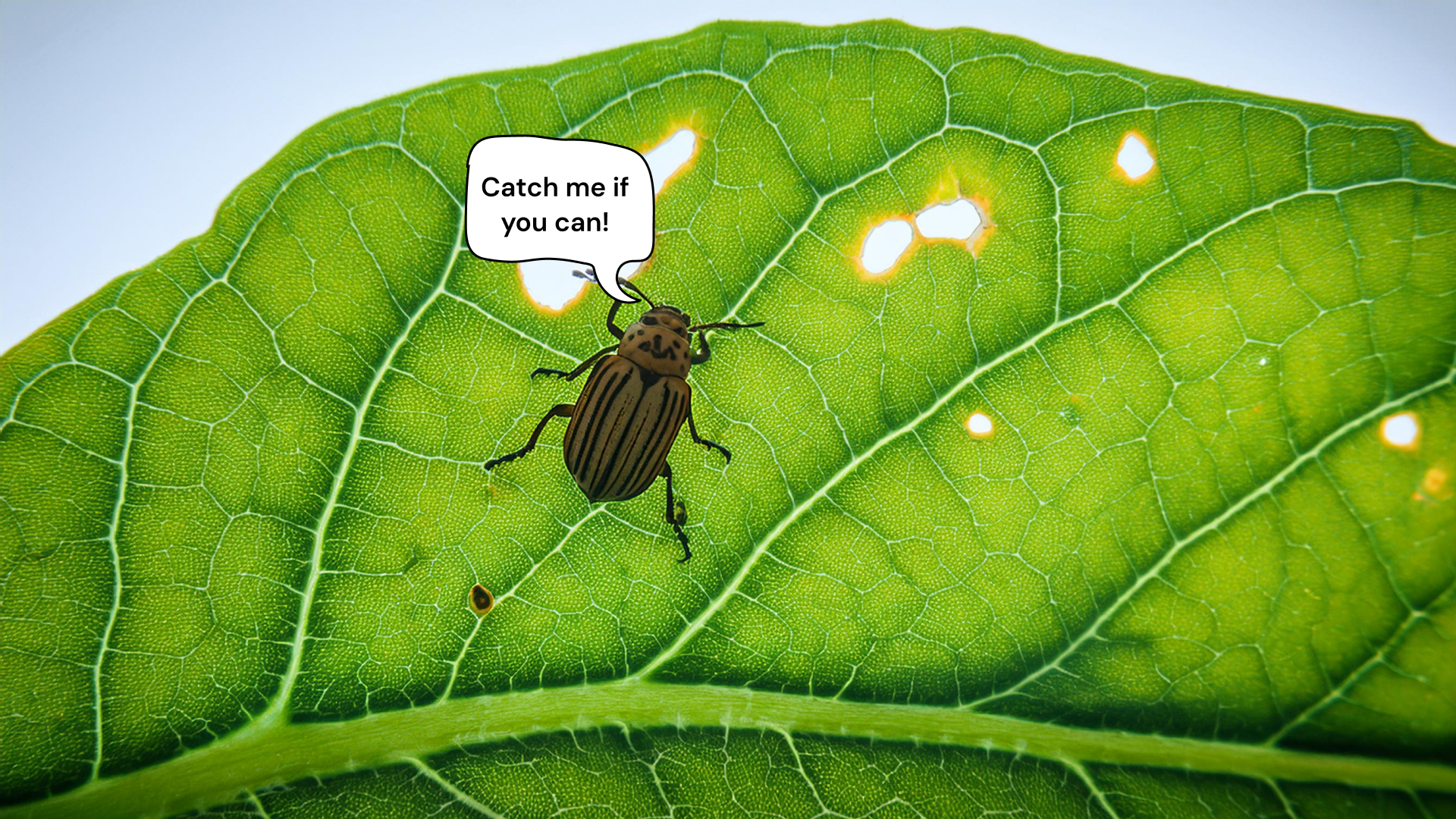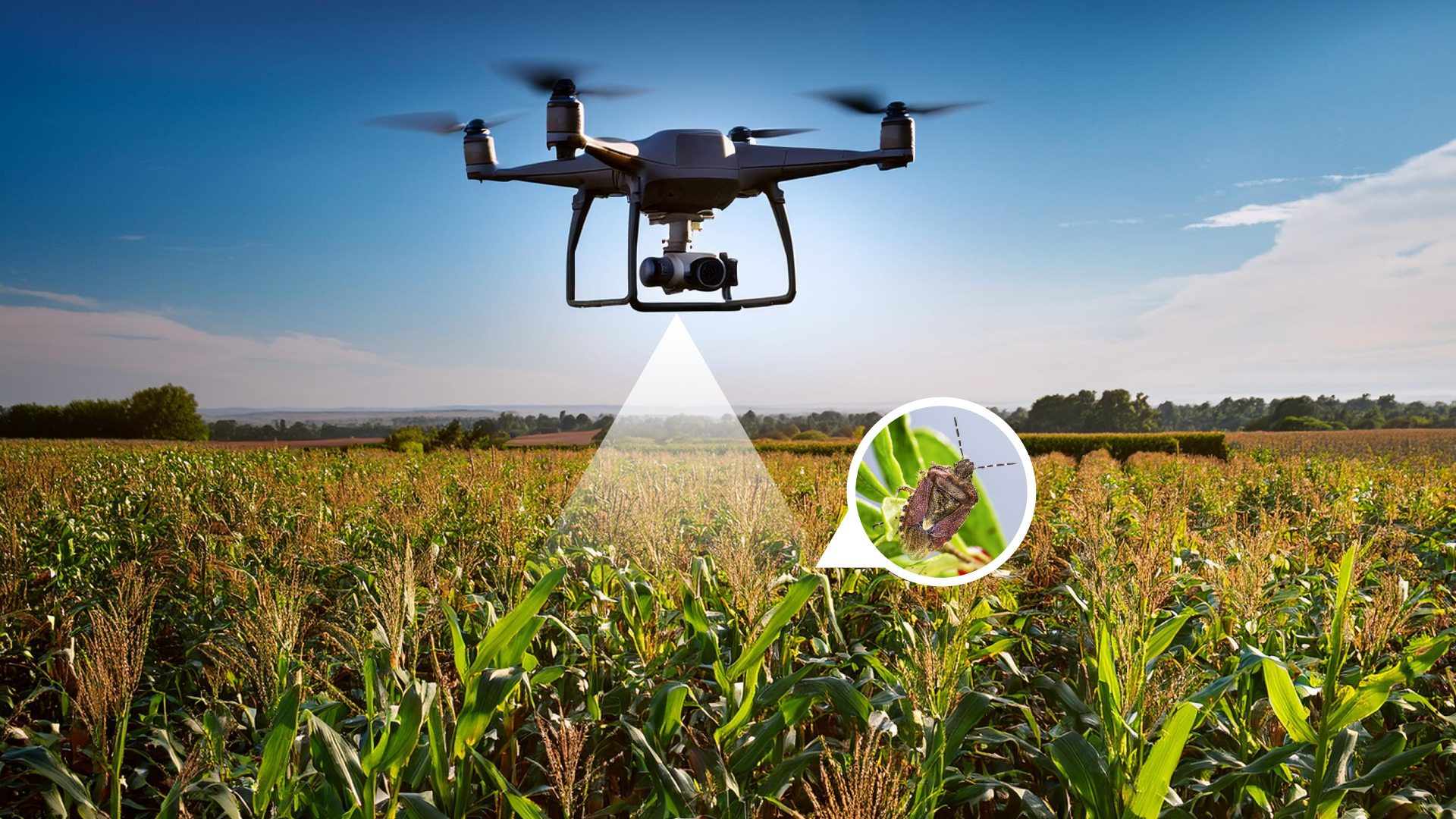Identify, monitor, control—AI can do it all better! The endless battle against pests is set to change, with AI emerging as the ultimate tool in the field. Create perfect strategies in pest management with AGRI-FOOD.AI, and your reward will be calm, peace, and prosperity.

Enhancing Integrated Pest Management (IPM) with AI
AI technologies play a pivotal role in boosting the efficiency and effectiveness of Integrated Pest Management (IPM) strategies. By leveraging advanced algorithms, AI significantly improves pest identification, monitoring, and control, optimizing pest management processes.
Improved Pest Identification and Monitoring
AI-driven image recognition tools are transforming pest identification, making it faster and more accurate. These tools use extensive datasets to train models that can identify pests at various life stages. This capability is especially crucial in large-scale farming, where early and accurate detection can prevent extensive crop damage.
AI can be integrated with existing monitoring tools like pheromone traps or camera-based systems to automatically detect and classify pests. This allows for real-time monitoring and provides actionable insights, enabling farmers to make informed decisions.
Integrating Imaging and AI for Real-Time Pest Monitoring
Recent advancements in imaging technology and AI-driven analysis have paved the way for integrating these technologies into IPM systems. By combining AI with automated image detection, farmers can monitor pests in near real-time, enhancing the precision and efficiency of pest control.
Smart AI-Driven Monitoring Systems
One approach involves developing smart AI-driven systems that automatically capture and analyze pest images. These systems transmit data to computational servers where AI models process the information, supporting farmer decision-making. This significantly enhances the ability to manage pests through automated and continuous monitoring.
- On-the-Go Systems: Mobile systems running on smart devices allow farmers to use AI-driven image detection during routine crop walks, identifying pests in real time.
- Fixed Camera Stations: Deployed alongside traditional pest traps, these stations capture images regularly, transmitting them to servers for AI-driven detection. This setup provides continuous monitoring of pest populations.
- Deployable Monitoring Stations: Advanced stations within crop canopies monitor pest abundance and activity continuously, providing near real-time data to help farmers make timely interventions.
These systems can be enhanced by integrating pheromone traps, which attract specific pests, making detection more targeted and effective.
Aerial Imaging and UAVs in Pest Monitoring
Aerial imaging using drones (UAVs) offers another dimension to pest monitoring. UAVs can survey large areas and detect pests at different life stages, such as immobile stages of moths or mobile stages like the brown marmorated stink bug. This technology is especially useful for early infestation detection and monitoring pest migration over large scales.

Overcoming Technical Challenges in AI Integration
To successfully integrate AI into IPM systems, several technical challenges must be addressed:
- Taxonomic Classification: Accurate species identification is critical for effective pest management. AI models must be trained to differentiate between pests and beneficial insects under various conditions.
- Ecosystem Context: Effective pest management should consider the broader ecosystem, including natural enemies and environmental factors, offering a more holistic approach.
- Threshold Translation: AI systems need to integrate traditional pest thresholds effectively, potentially through models that combine pest identification with damage assessment.
- User Adoption: Farmer adoption of AI-driven IPM systems depends on usability and trust. AI models should be transparent and provide reliable, data-driven recommendations.
- Computational Efficiency: AI models must be efficient and lightweight for on-farm use. Techniques like knowledge distillation can reduce computational requirements, making these systems accessible to farmers with limited resources.
Societal and Agricultural Benefits
Integrating AI into IPM can provide significant economic and environmental benefits. By optimizing resource use, reducing production costs, and improving pest control accuracy, AI-driven systems enhance agricultural sustainability. Precise pest monitoring also minimizes the need for chemical interventions, promoting more eco-friendly farming practices.
Climate Change Requires Faster Reactions
The integration of AI and imaging technology into IPM represents a transformative approach to pest management. By addressing technical challenges and focusing on user adoption, these systems have the potential to revolutionize how farmers monitor and control pests, leading to more sustainable and efficient agricultural practices.
Xylella, boars, insects and global warming – solutions from AGRI-FOOD.AI
We asked Gergő Boromisza, leading expert at AGRI-FOOD.AI, to share his ideas and give us some insight into how IPM could be more efficient by using AGRI-FOOD.AI technologies.
Preventing Infections
Do you remember when Xylella fastidiosa killed a third of the region’s 60 million olive trees in Puglia, Italy, back in 2013? This meant a real plant apocalypse for the region, which once produced almost half of Italy’s olive oil. Centuries-old trees choked to death, withered, and dried out. The incurable bacterial infection caused approximately 1 billion euros in damage.
And again, in 2024: a Xylella subspecies was identified in Puglia, which had annihilated US vineyards but had never been detected in Italy before. Xylella has become a symbol of climate change-induced new infections spreading at hyperspeed around the globe.
“If we are prepared with real-time monitoring,” says Gergő Boromisza, “using drones and machine vision—or collecting specimens from our plantations, leaves, soil, and analyzing the data with AI—we can easily detect any unusual changes immediately and intervene before infections spread and a vast number of our trees are destroyed.”
This method can be useful not only for olive trees—oil palms also have their own bacteria, and fungi can also cause serious damage. With AGRI-FOOD.AI technology, diseases can be detected in their early stages, allowing farmers to prevent the outbreak of a pandemic.

Insects and Game Damage
Insect traps are widely used on farms to analyze the species present. Usually, the “prey” is collected by human workers and identified by an agronomist. Imagine being able to see what your trap has caught in real time—with AI identifying the species as well! Or even more: AI can find patterns and warn you if anything unusual is detected.
“Machine vision combined with AI software opens the possibility of staying up-to-date with insect populations on your plantation without leaving the computer room—or receiving the data directly on your mobile,” starts Boromisza. “Even larger animals can be easily detected the moment they arrive. Game damage can lead to significant profit loss in a cornfield if, for example, 10 wild boars arrive and help themselves on the ripened corn—or the same with deer in a wheat field. If your farm is equipped with our technology, crop raiding can be reduced to a minimum.”
Eyes from the Stars
High-resolution satellite images can also be used in farming if the data is processed by the “superbrain” of AI: you can estimate vegetation, identify unwanted species, estimate pesticide needs, and even find suspicious individuals—such as 1 sick tree among 10,000—using just one advanced AI software.
“After finding the suspicious individual, you can fly in with a drone for a closer look, and then, after analyzing the pictures, decide what action to take to prevent further infections,” explains Boromisza. “We have many more ideas. The possibilities are infinite; if we see the definitive problem and questions, we can devise the best plans to address the situation.”
Global Warming = Global Warning
“As the climate is changing, we must change our attitude in farming—and also in pest management,” says Boromisza. “First of all: we have to be prepared and react quickly—as fast as the challenges arrive. Nowadays, with fewer predictable weather patterns and followable itineraries from the past, when the climate was more predictable, the importance of data and real-time analysis is more crucial than ever. If human minds and eyes are too slow to keep up with the hyperspeed processes, AI can be our most useful helping hand in defending our plants and farms from unwanted consequences.”
Remember: With AGRI-FOOD.AI, there are no limits—not even in pest management. Contact us and overcome the difficulties with us! With AGRI-FOOD.AI, The Future is Now!
 2024-09-06
2024-09-06  PODCAST
PODCAST
 share
share


 Our website uses cookies
Our website uses cookies